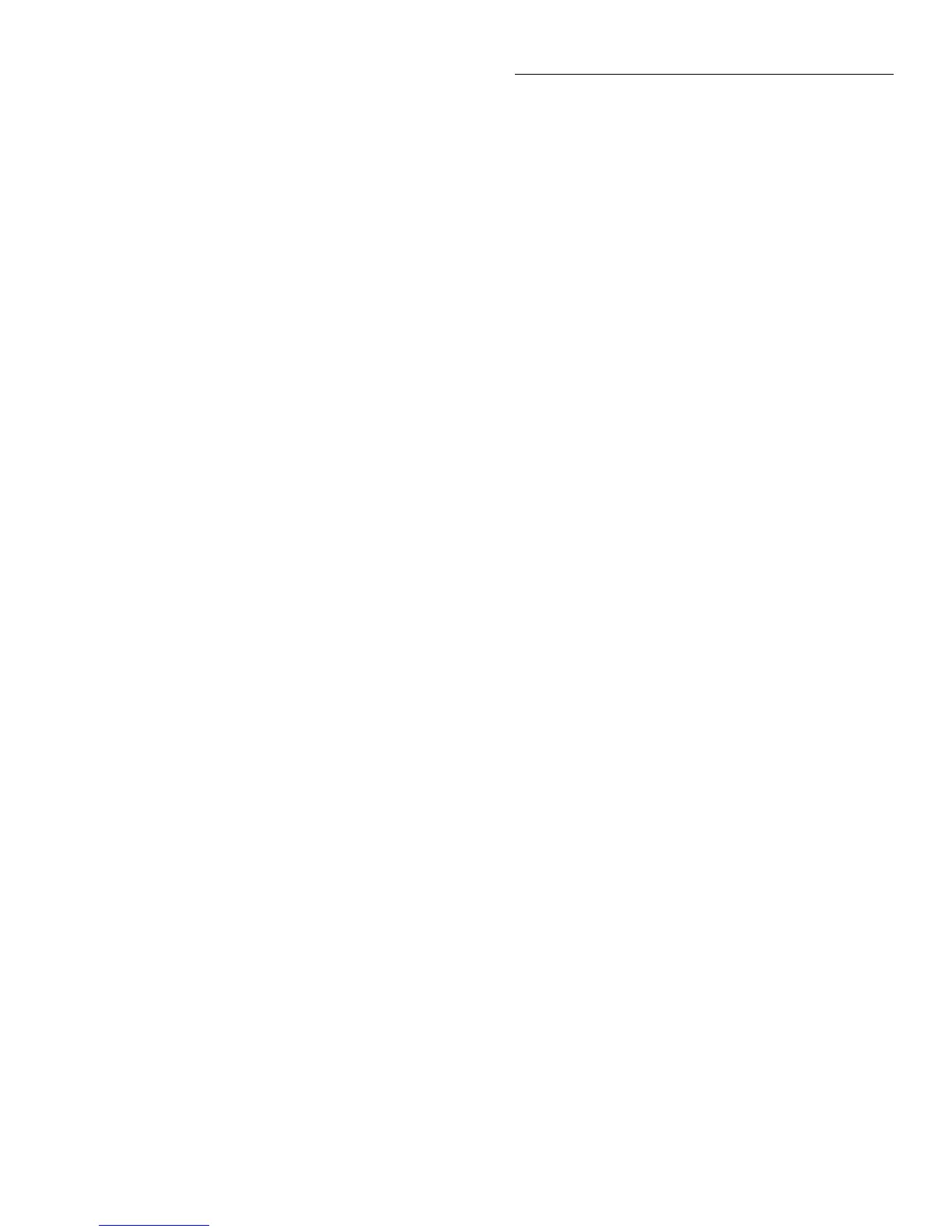IEEE-488 Reference
3-135
:QUEue commands
[:NEXT]?
:STATus:QUEue[:NEXT]? Read Error Queue
As error and status messages occur, they are placed into the Error Queue. This query command
is used to read those messages.
The Error Queue is a first-in, first-out (FIFO) register. Every time you read the queue, the “old-
est” message is read and that message is then removed from the queue. The queue will hold up
to 10 messages. If the queue becomes full, the message “350, ‘Queue Overflow’” will occupy
the last memory location in the register. On power-up, the Error Queue is empty. When the Error
Queue is empty, the message “0, ‘No error’” is placed in the Error Queue.
The messages in the queue are preceded by a number. Negative (-) numbers are used for SCPI
defined messages, and positive (+) numbers are used for Keithley defined messages. The mes-
sages are listed in Table 2-4.
After this command is sent and the Model 2002 is addressed to talk, the “oldest” message in the
queue is sent to the computer.
Note: The :STATus:QUEue[:NEXT]? query command performs the same function as the
:SYSTem:ERRor? query command (see System subsystem).
PRINT #1, "output 16; :stat:que?" ' Query "oldest" message in queue
PRINT #1, "enter 16" ' Get response message from 2002
ENABle <list>
:STATus:QUEue:ENABle <list> Enable messages for Error Queue
<list> = (numlist)
where; numlist is a specified list of messages that you wish to enable for the Error Queue.
:ENABle? Query list of enabled messages
On power-up, all error messages are enabled and will go into the Error Queue as they occur.
Status messages are not enabled and will not go into the queue. This command is used to specify
which messages you want enabled. Messages not specified will be disabled and prevented from
entering the queue.
When this command is sent, all messages will first be disabled, then the messages specified in
the list will be enabled. Thus, the returned list (:ENABle?) will contain all the enabled
messages.
Messages are specified by numbers (see Table 2-4). The following examples show various forms
for expressing a message numlist:
Numlist = -110 Single message.
-110, -140, -222 Messages separated by commas.
-110:-222 Range of messages (-100 through -222).
-110:-222, -230 Range entry and single entry separated by a comma.
3.20.
Description
Program fragment
Parameters
Query
Description

